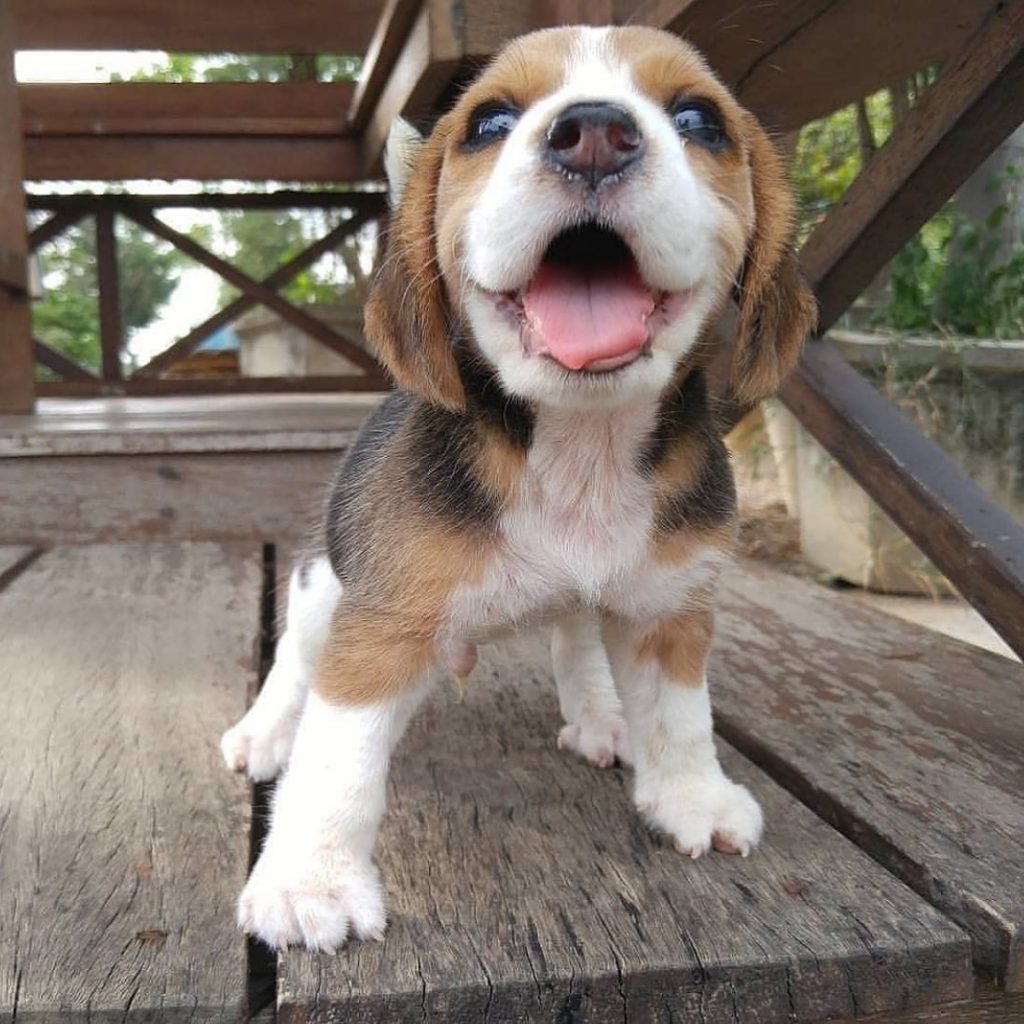Beagles, known for their playful nature and boundless energy, are delightful to bring into any home. However, like all breeds, they come with unique challenges and traits requiring specific training approaches. Training a Beagle nurtures a well-behaved pet and ensures a happy and fulfilling relationship between the dog and its owner. This comprehensive guide delves into the various aspects of Beagle training, from socialization and confidence building to specific techniques like chew training and leash manners. By understanding and applying these methods, owners can look forward to a journey filled with growth, bonding, and mutual respect with their Beagle companions.

Beagle Training Essentials
Beagle training is a multifaceted process that requires patience, consistency, and an understanding of the breed’s characteristics. Beagles are intelligent, curious, and often stubborn, making training both a challenge and an opportunity for deepening the bond between dog and owner. Critical to successful training is starting early, maintaining a positive and patient approach, and using methods that align with the Beagle’s instinctual behaviors.
Socializing Your Beagle
Socialization is a crucial aspect of Beagle training. It involves exposing your Beagle to various people, animals, environments, and experiences at a young age. This exposure helps them become well-adjusted and less fearful in different situations. Socialization should start as early as possible, ideally during the puppy stage. Introducing your Beagle to different stimuli in a controlled, safe manner builds their confidence and reduces the likelihood of anxiety or aggression later in life. Remember, socialization is not just about quantity but also the quality of interactions. Positive experiences are essential to adequate socialization.
Confidence Building in Beagles
Building confidence in Beagles is essential for their well-being and ease of training. A confident Beagle is more adaptable, less anxious, and more willing to engage in learning. Here are some effective techniques to boost your Beagle’s confidence:
- Positive Reinforcement: Use positive reinforcement when your Beagle follows commands or shows desired behavior. Treats, praises, and affection are potent tools for reinforcing positive actions.
- Controlled Exposure to New Situations: Gradually introduce your Beagle to new environments, people, and other pets. Ensure these experiences are positive, allowing your Beagle to explore at their own pace.
- Play and Exercise: Regular playtime and exercise keep your Beagle physically fit and boost their mental health. Interactive games that challenge them can improve confidence.
- Training Sessions: Regular, short training sessions help your Beagle learn and succeed, boosting their confidence. Focus on basic commands initially before progressing to more complex tasks.
- Social Playdates: Arrange playdates with other dogs, especially those with calm and friendly demeanors. This helps your Beagle learn social cues and gain confidence in interacting with other animals.
- Avoid Negative Reinforcement: Avoid scolding or punishing your Beagle for mistakes or unwanted behavior. This can lead to fear and a lack of confidence. Instead, guide them gently toward the desired behavior.
- Encourage Exploration and Curiosity: Allow your Beagle to explore new objects, scents, and environments. This nurtures their natural curiosity and builds confidence in handling new situations.
- Consistent Routine: A consistent daily routine provides security and confidence. Regular feeding, walking, and sleeping help your Beagle feel more secure and less anxious.
Techniques for Boosting Confidence

Boosting a Beagle’s confidence can be achieved with focused techniques:
- Positive Reinforcement: Reward good behavior with treats and praise.
- Controlled Exposure: Gradually introduce them to new environments and situations.
- Obstacle Courses: Simple home-based courses to improve problem-solving and agility.
- Clicker Training: Use a clicker for immediate positive reinforcement.
- Treat Puzzles: Engage their minds with puzzles that reward problem-solving.
- Gentle Exposure to Fears: Slowly introduce elements they fear with positive reinforcement.
Effective Chew Training for Beagles
Practical chew training for Beagles hinges on redirecting their natural chewing instincts to appropriate objects. Provide a variety of exciting and safe chew toys to keep them engaged and satisfy their chewing needs. Whenever your Beagle opts for inappropriate items, calmly guide them back to their toys. This consistent redirection teaches them what is acceptable to chew on.
In addition to offering suitable toys, incorporate commands like ‘leave it’ or ‘drop it’ during training sessions. These commands help manage their chewing behavior. Remember, the key is consistency and patience. With regular practice and positive reinforcement, your Beagle will learn to focus their chewing habits on suitable objects, mitigating unwanted chewing incidents.
Basic Commands and Boundary Setting
Training Beagles in basic commands and boundary setting is essential for a harmonious living environment. Here’s a brief table summarizing key commands and their purposes:
| Command | Purpose |
| Sit | To instill discipline and prepare for further commands |
| Stay | To maintain position until the following command is given |
| Come | To recall the dog, ensuring safety and control |
| No | To indicate prohibited behaviors or objects |
| Off | To instruct the dog to get off furniture or people |
| Heel | To teach walking politely on a leash |
In addition to verbal commands, setting physical boundaries in the home is crucial. This might involve designating specific areas for eating, sleeping, and playing. Establishing these boundaries early on helps your Beagle understand where they are allowed and not, preventing unwanted behaviors like entering restricted areas or jumping on furniture.
House Training and Crate Training Tips

House training and crate training are essential for a well-adjusted Beagle. Here are some brief tips to make these processes smooth and effective:
- Regular Schedule: Maintain a consistent schedule for feeding, potty breaks, and crate times. Beagles thrive on routine, and this helps them understand when and where to relieve themselves.
- Crate Training: Start by introducing the crate positively, making it a comfortable and inviting space. Gradually increase your Beagle’s time in the crate, ensuring it’s a positive experience.
- Praise and Rewards: When your Beagle successfully goes potty outside or stays calmly in the crate, reward them with praise or treats. This positive reinforcement encourages them to repeat the behavior.
- Supervision and Confinement: Keep a close eye on your Beagle, especially during the initial training stages. If you can’t supervise, confine them to a puppy-proofed area or crate to prevent accidents.
- Accident Management: If accidents happen, clean them up thoroughly to remove scents and avoid scolding your Beagle. Instead, focus on reinforcing the correct behavior.
- Patience and Consistency: Be patient and consistent in your approach. House and crate training take time, and every Beagle learns at their own pace.
By following these tips, you can effectively house-train and crate-train your Beagle, leading to a more comfortable and stress-free environment for you and your pet.
Core Muscle Development in Beagles
Developing the core muscles of a Beagle is an essential aspect of their overall health and agility. Strong core muscles aid in physical activities, prevent injuries, and enhance balance. A combination of exercise, play, and specific training activities is essential to achieve this.
Engaging your Beagle in regular physical activity is crucial. Activities like running, playing fetch, or tug-of-war provide cardiovascular benefits and work the core muscles effectively. These activities should be a daily routine to ensure consistent muscle development. Starting with moderate exercise and gradually increasing intensity is essential based on your Beagle’s fitness level and age.
Another critical aspect is incorporating specific exercises that target the core muscles. This can include activities like balanced walking (walking on uneven surfaces or over small obstacles), controlled climbing, and exercises that encourage your Beagle to stretch and reach. These exercises can be integrated into playtime or training sessions, making them enjoyable for your Beagle while effectively strengthening their core.
Leash Training for Active Beagles
Leash training is crucial to raising an active Beagle, ensuring that walks are enjoyable and safe for both the dog and the owner. With their strong sense of smell and exploratory nature, beagles can sometimes be challenging to leash train, but with the proper techniques, it can be rewarding.
The first step in leash training is to get your Beagle comfortable with the leash and collar. Start by letting them wear the collar and leash around the house, allowing them to get used to the feel. Once they seem comfortable, begin with short walks in a familiar, quiet environment. During these walks, it’s essential to balance allowing some freedom to explore and teaching them to stay by your side. This can be achieved through verbal commands and gentle tugs on the leash to guide them.
One effective method is to use treats and praise to encourage your Beagle when they walk nicely beside you. If they start to pull or wander, stop walking and call them back to your side. Praise them and continue walking once they return and the leash is slack. Consistency in this practice will teach your Beagle that walking calmly by your side is the desired behavior.
Beagle Puppy Training Preparation

Preparing for Beagle puppy training involves a few key steps:
- Gather Supplies: Essential items include a leash, collar, chew toys, training treats, and a crate or designated sleeping area.
- Create a Training Plan: Outline basic commands and house training routines. Set a consistent schedule for meals, potty breaks, and training sessions.
- Puppy-Proof Your Home: Ensure your home is safe for a curious puppy. Remove hazardous items and secure loose wires or small objects.
- Choose a Vet: Establish a relationship with a veterinarian for health check-ups and vaccinations.
With these preparations, you’ll create a conducive environment for your Beagle puppy’s training and overall well-being.
Understanding Beagle Breed Specifics
Understanding the specifics of the Beagle breed is crucial for practical training and care. Beagles are known for their strong sense of smell and tracking instincts, making them naturally curious and inclined to follow scents. This trait can sometimes lead to distractions during training or walks. They are also highly social and energetic, requiring regular interaction and exercise to keep them happy and healthy. Additionally, A blade is intelligent but stubborn, necessitating patience and consistency in training. Recognizing these characteristics helps tailor training methods to suit their unique needs, ensuring a well-behaved and well-adjusted Beagle.
Overview of the Beagle Training Program
A comprehensive Beagle training program encompasses several vital components. It begins with basic obedience training, teaching commands like sit, stay, and come. This foundation sets the stage for more advanced training and ensures your Beagle understands basic commands and expectations. Socialization is another critical element, exposing your Beagle to various environments, people, and animals to develop well-rounded behavior. The program should also include leash walking and chew training tailored to the Beagle’s instinctual behaviors. Consistency, patience, and positive reinforcement are the cornerstones of the training process, ensuring your Beagle learns effectively and enjoys the training experience.
Implementing the Push Drop Stick Method
The Push Drop Stick method is an innovative approach to dog training that is efficient for breeds like beagles. It combines three key components – Push, Drop, and Stick – to create a balanced training routine that addresses obedience, discipline, and focus.
First Week: Sleep and Alone Training
The first week focuses on ‘Sleep’ and ‘Alone’ training. This phase is crucial for establishing routines and boundaries. The ‘Push’ part involves guiding the Beagle to understand bedtime and sleep locations, gently pushing them towards the desired behavior. The ‘Drop’ aspect covers training them to relax and settle in their space, especially when left alone. The ‘Stick’ element ensures that these routines are consistently reinforced, helping the Beagle feel secure and understand expectations.
Enhancing Social Skills in Beagles
As the training progresses, the focus shifts to enhancing social skills. This involves controlled socialization with other dogs and people, using the Push Drop Stick method to manage interactions and reinforce positive social behaviors.
This method’s structured approach, combining gentle guidance with consistent reinforcement, makes it a powerful tool in training Beagles. By the end of the program, a well-rounded, obedient, and friendly Beagle emerges, ready to face various situations with confidence and ease.
Advanced Socialization and Training Techniques
In advancing the socialization and training of Beagles, the focus shifts to more complex situations and commands. This stage involves exposing them to diverse environments and teaching them to respond to commands amidst distractions. The goal is to enhance their adaptability and obedience in various settings, further solidifying their training.
Refining Skills in the Fifth Week
During the fifth week, the training emphasizes refining the skills learned. This includes perfecting obedience commands and improving leash manners in different settings. The aim is to consolidate the Beagle’s understanding and response to commands, ensuring reliability in various situations.
Consolidating Training Lessons in Week Six
In week six, the focus is on consolidating all the training lessons. This involves revisiting each skill and command learned, ensuring the Beagle fully grasped them. It’s a time to reinforce training, iron out any inconsistencies, and build on the foundation established in previous weeks.
Expanding Training in the Seventh Week
The seventh week is about expanding the training to include more challenging scenarios. This might involve more complex commands or training in busier, more distracting environments. The goal is to enhance the Beagle’s adaptability and responsiveness to commands, regardless of external factors.
Finalizing Training in the Eighth Week
In the eighth and final week, the training is finalized. This week is dedicated to reviewing all the skills and ensuring the Beagle responds well. It’s also an opportunity to address any remaining issues and prepare for the transition out of the intensive training phase.
Next Steps After Basic Training
After completing basic training, there are several steps to further your Beagle’s development:
- Advanced Training: Consider advanced obedience classes or agility training to challenge further and stimulate your Beagle.
- Regular Reinforcement: Continue practicing learned skills to reinforce training.
- Socialization: Keep exposing your Beagle to new environments and situations to maintain social skills.
Fun and Interactive Apps To Train Your Beagle

- Dogo Training App: This is one of the most downloaded dog training apps, offering over 100 dog tricks and training courses with video instruction. It includes a built-in clicker, and whistle, and professional trainers and veterinarians curate programs. A 7-day free trial is available, with the option to subscribe monthly or annually.
- Puppy Dog App: This app offers a 7-day free trial and includes over 100 lessons from celebrity dog trainer Sara Carson. It features live chats with trainers, easy video instruction, and a built-in clicker. Lessons use positive reinforcement and cover various topics, from potty training to trick training.
- Good Pup Training App: This app provides a personal trainer with weekly video chats or built-in text capability. Tailored to your dog’s specific needs, it offers 24/7 unlimited chats with veterinary experts and daily guided practice. There’s a 7-day free trial, after which it costs $29.99 per week.
Maintaining Training Consistency
Maintaining consistency in training is critical to a well-trained Beagle. It’s essential to practice the skills learned in training regularly. This includes reinforcing commands, adhering to established routines, and continuing socialization efforts. Consistent reinforcement ensures the behaviors become ingrained and second nature to your Beagle. Also, adapting training methods as your beagle grows and its environment changes helps retain their interest and engagement in learning. Remember, training is an ongoing journey, not just a one-time effort.
Journey to a Happy and Well-Trained Beagle
The journey to raising a happy and well-trained Beagle is both rewarding and challenging. It involves understanding the breed’s needs, consistent training, and patience. A well-trained Beagle exhibits good behavior and enjoys a strong bond with its owner. The key is to keep training sessions engaging, reward positive behavior, and understand that every Beagle learns at its own pace. Remember, the goal is obedience and ensuring your Beagle’s happiness and well-being.
